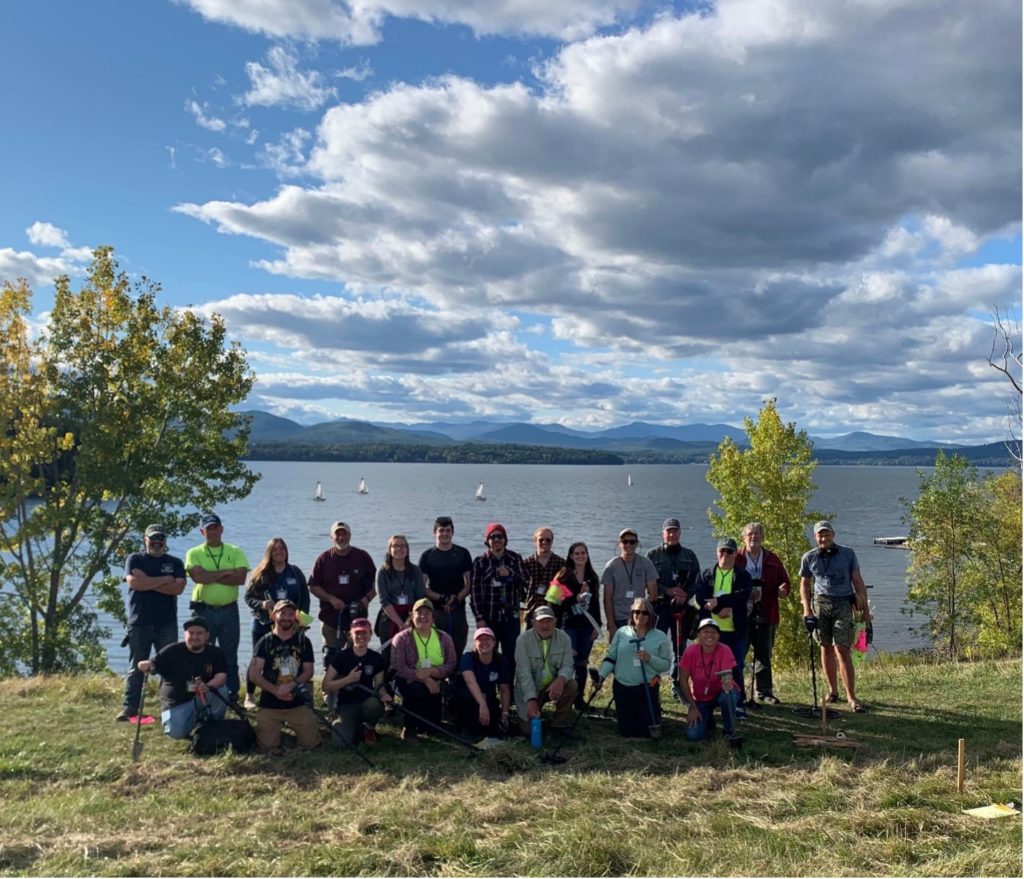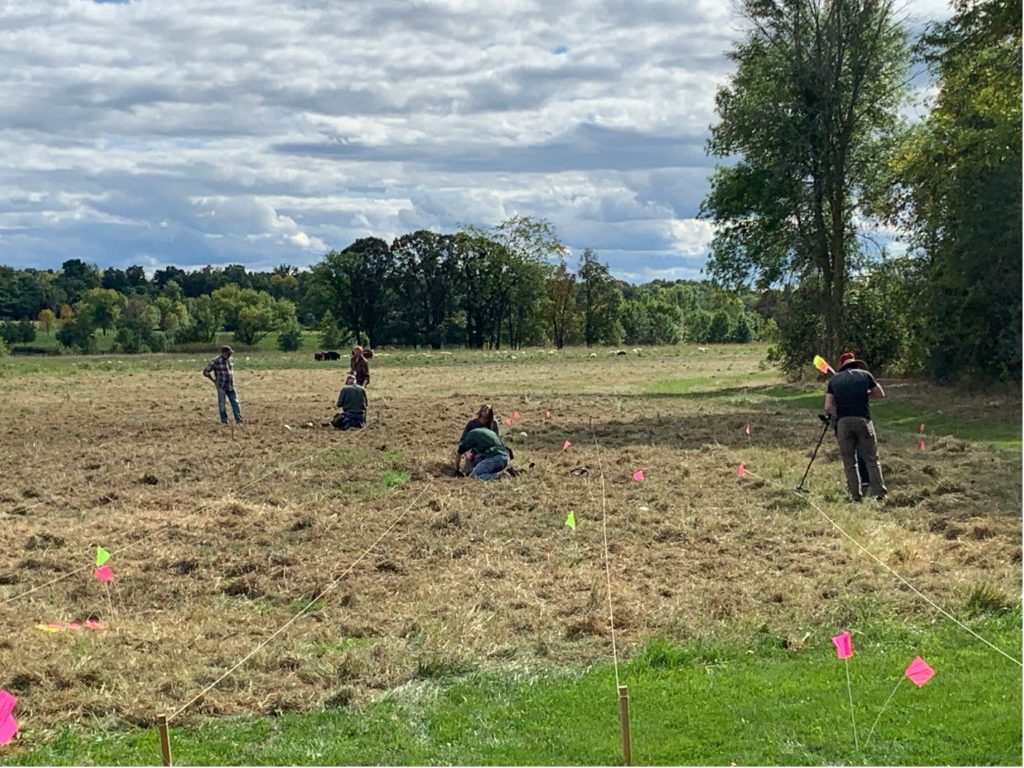Through the month of October, we have been finishing up our fieldwork underwater and on land for the Arnold’s Bay Project. Our partners, the Advanced Metal Detecting for the Archaeologist (AMDA) group, ran a Register for Professional Archaeologists (RPA) certified metal detecting course over a weekend, sampling a few key areas of agricultural fields behind the bay and the historic Ferris Homestead and along the transitional shoreline.

The lake level in fall is generally at its lowest point, allowing our class to get better coverage of the transitional zone across the shoreline. By laying arbitrary transect lines along the beach and agricultural fields, metal detecting teams were able to cover ground more efficiently and accurately than random scouting. This method allows for full coverage of a sample area, providing greater data than a randomly meandering detector would provide. Teams marked found objects with PVC pin flags color coded to indicate material type, filled out artifact bag-tags, and left bagged items in place. Then I got to run around and take GPS points for each artifact, marking the GPS waypoint number on each bag tag and collecting artifacts at the end of each day.

The class represented a diverse spread of occupation and background experience with metal detection including folks from the Vermont Division of Historic Preservation, the Vermont Senate, SUNY Plattsburg, Indiana University of Pennsylvania, Lake Champlain Maritime Museum current and former staff, Kent-Delord House Museum staff, and the Stockbridge-Munsee Tribal Historic Preservation Officer. It was fun to have more knowledgeable detectorists share some techniques and pointers in addition to our extremely knowledgeable instructors from AMDA. We had some rainy days but still managed to cover a lot of ground and have some fun in the field!
Some of the post-processing work that we are switching gears towards involves photographing our artifact collection, picking pieces that will be conserved and getting that process started, plotting our GPS data, and building our database so that we can analyze the spatial data that we gathered during this project. Our next blog post will be updating our underwater survey progress so stay tuned!
Our findings for the Arnold’s Bay Project will be presented in a symposium format at the Society for Historical Archaeology’s annual conference in January of 2022 in Philadelphia, Pennsylvania. And there is more research pending for the field season of 2022, so stay tuned to our social media channels for more updates!
In the meantime, enjoy some more photos of our work and fun in the field:








